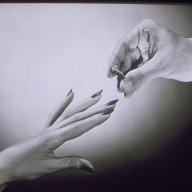Magnus Resch On His Latest Book and What New Art Collectors Need to Understand
"For me, art collecting goes beyond financial gain; it's about supporting artists I admire and deriving genuine pleasure from ownership."
Earlier this month, art economist Magnus Resch debuted his latest book: “How to Collect Art,” from Phaidon Press. Too much in the art world is assumed, and too often those who would like to participate in it to a greater degree are put off for fear that basic questions may make them appear stupid or—worse—poor.

Resch wrote his book both for art collectors entering the market for the first time and seasoned collectors, drawing on insights from diverse sources such as Andy Warhol collector David Mugrabi, art advisor Amy Cappellazzo, gallerist Jeffrey Deitch, and Christie’s CEO Guillaume Cerutti. Observer recently caught up with Resch to hear more about his new book for art collectors and how he navigates art fairs.
Why did you want to write this book?
My goal was to offer guidance to newcomers entering the market, serving as their trusted advisor through the initial steps of their collecting journey. I want to help them buy their first piece without having a big budget or worrying about overpaying. And the art market needs new buyers. Over the past decade, the number of buyers has remained stable, only six thousand annually spend over $100,000 on art—all despite a doubling in the global number of millionaires and record attendance at art events. This highlights a conversion issue, where the newly affluent fail to seamlessly transition into art buyers. I am convinced that a combination of education, entertainment and transparency can address this challenge by enticing more art enthusiasts to become active buyers.
One of your chapters has the bold subtitle ‘Why Most Art Is Not a Good Investment.’ Can you explain that idea in a few words?
There’s a common misconception fueled by headlines boasting record prices: that investing in art guarantees substantial profits. However, the reality is starkly different. Only a small fraction of artists at the top echelon see significant returns, while the vast majority of artworks offer minimal financial gain. In my book, I aim to debunk myths by equipping readers with tools to identify these top-tier artists. By doing so, collectors can make informed decisions and avoid overpaying for pieces. Moreover, I stress the intrinsic value of art beyond its monetary worth. For me, art collecting goes beyond financial gain; it’s about supporting artists I admire and deriving genuine pleasure from ownership. This philosophy underpins my book.
You’re an economist so I realize this isn’t your area of expertise, but you do emphasize that people collect out of passion. How can they find art that speaks to them?
I strongly believe that being well-informed as an art buyer increases the likelihood of making a purchase. This means understanding both the pricing and potential future value of the artwork. Therefore, I advocate for a consistent approach: when you come across a piece that catches your eye, inquire about its price. If it fits within your budget, begin your due diligence by engaging with the gallerist and artist, and by reviewing the artist’s CV using the formula outlined in my book. Armed with this knowledge, buyers can make purchases with a clear understanding of the artwork’s idea and value.
I like how detailed this book is. It even contains strategies for navigating fairs. How do you handle them yourself?
Art fairs can be overwhelming, given the sheer abundance of art on display. To navigate this, I limit myself to exploring a maximum of two fairs per day. I begin with the main fair, then venture into the smaller, emerging ones. At the fair, I make it a point to attend the talks that are often part of the programming, focusing on current themes in the art world. On the final day, I revisit artworks that I liked to potentially negotiate deals on unsold pieces. Additionally, I view art fairs as invaluable networking platforms, allowing me to connect with gallerists, fellow collectors and industry insiders.
What do you make of the continued proliferation of art fairs? It feels like people have been talking about how sick they are of them for a decade now.
For collectors, art fairs are helpful because they offer a one-stop solution to view a wide range of artworks conveniently. And they have evolved into pivotal platforms for galleries, contributing significantly to their annual revenue, often accounting for up to fifty percent. Yet while I acknowledge the significance of art fairs, it’s evident that they encounter a conversion challenge. Remarkably, less than five percent of art fair attendees make purchases. So while fairs have succeeded in attracting people through their doors, they are struggling to develop a purchase experience that enables visitors to find and acquire the artworks they desire.
Many people see the art market and the museum world as completely separate, but your book takes a more nuanced view of how they’re interrelated. Could you explain that?
The relationship between the art market and museums is profound. Understanding this concept should be at the foundation of every collector’s journey because the success of an artist is intricately linked to the network of galleries and museums they are associated with, as a study shows for which I analyzed the careers of 500,000 artists. In my book, I aim to demystify these networks and shed light on the power dynamics within the art market. Understanding this data should also inject a sense of enjoyment back into art buying.
I encourage readers to trust their taste, engage in meaningful conversations with galleries and artists, actively visit art shows and take the plunge with their first purchase without apprehension of overpaying. My fundamental message to new collectors is simple: buy what you love. Approach art not merely as a financial investment, but as a means to invest in the career and creativity of an artist. Purchasing art transcends monetary transactions; it’s about cultivating a deep connection with the artwork and showing support for the broader artistic community.
This book touches on the online buying that happened during COVID-19, and NFTs. Do you think those parts of the market will come back someday?
The initial hype surrounding NFTs and digital art has waned. Yet, the underlying technology powering NFTs is here to stay. Blockchain technology has introduced innovative ways of utilizing digital assets, with the potential to revolutionize the art market in ways previously unimaginable. Once collectors demand works be registered on the blockchain, it will foster transparency in the market. Artists will benefit from greater control over their works and the ability to earn royalties from resales. Moreover, as blockchain technology becomes more prevalent, more buyers will enter the market. While this evolution may not occur overnight, its impact will be profound and far-reaching.




